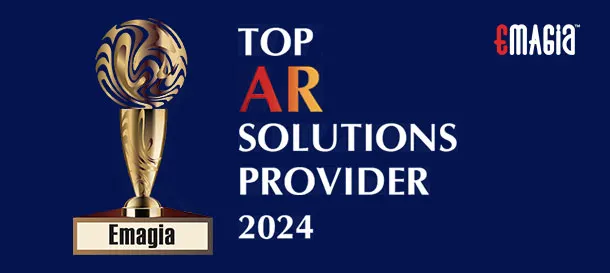Introduction to Accounts Receivable Notes
Accounts receivable notes are formal agreements where a debtor promises to pay a specific amount to a creditor at a future date. These notes often include interest terms and are used when extending credit beyond standard terms or when converting overdue accounts receivable into a more formal arrangement. Understanding and effectively managing accounts receivable notes is crucial for maintaining healthy cash flow and financial stability in a business.
Understanding Accounts Receivable and Notes Receivable
What Are Accounts Receivable?
Accounts receivable (AR) represent the money owed to a company by its customers for goods or services delivered but not yet paid for. These are typically short-term assets expected to be collected within a year and are recorded on the balance sheet as current assets. Efficient management of AR is essential for ensuring liquidity and operational efficiency.
What Are Notes Receivable?
Notes receivable are formal written promises to receive a specific amount of money at a future date, often with interest. They are used when the credit period extends beyond typical accounts receivable terms or when the amount involved is substantial. Notes receivable can be classified as current or non-current assets based on their maturity date.
Key Differences Between Accounts Receivable and Notes Receivable
- Formality: Accounts receivable are informal agreements, while notes receivable are formal, legally binding contracts.
- Interest: Notes receivable typically include interest terms; accounts receivable usually do not.
- Duration: Notes receivable often have longer terms compared to accounts receivable.
- Legal Enforceability: Notes receivable provide stronger legal recourse in case of default.
The Role of Accounts Receivable Notes in Business Finance
Importance of Managing Accounts Receivable Notes
Effective management of accounts receivable notes ensures timely collection of funds, maintains cash flow, and reduces the risk of bad debts. It also provides legal documentation that can be crucial in enforcing payment terms.
Impact on Financial Statements
Accounts receivable notes impact both the balance sheet and income statement. They are recorded as assets on the balance sheet and generate interest income, which is recorded on the income statement.
Legal Considerations
Since notes receivable are formal contracts, they provide legal protection to the creditor. In case of default, the creditor has the right to pursue legal action to recover the owed amount.
Accounting for Accounts Receivable Notes
Initial Recognition
When a note receivable is issued, it is recorded by debiting the notes receivable account and crediting the appropriate account, such as accounts receivable or sales revenue.
Interest Accrual
Interest on notes receivable is accrued over time and recognized as interest income. The calculation is typically based on the principal amount, interest rate, and time period.
Collection and Settlement
Upon maturity, the collection of the note involves debiting cash and crediting notes receivable and interest income. If the note is dishonored, it is transferred back to accounts receivable.
Allowance for Doubtful Notes
Businesses may set up an allowance for doubtful notes to account for potential defaults, ensuring that the financial statements reflect a more accurate picture of expected cash flows.
Managing and Optimizing Accounts Receivable Notes
Credit Policies
Establishing clear credit policies helps in assessing the creditworthiness of customers and determining appropriate terms for notes receivable.
Monitoring and Collection
Regular monitoring of notes receivable ensures timely collection. Implementing reminder systems and follow-up procedures can aid in reducing defaults.
Utilizing Technology
Leveraging accounting software can streamline the management of notes receivable, automate interest calculations, and provide real-time tracking of outstanding notes.
How Emagia Enhances Accounts Receivable Notes Management
Emagia offers advanced solutions for managing accounts receivable notes, providing tools for automation, analytics, and risk assessment. Their platform enables businesses to:
- Automate the creation and tracking of notes receivable.
- Analyze payment patterns and predict potential defaults.
- Integrate with existing accounting systems for seamless operations.
By utilizing Emagia’s solutions, companies can improve cash flow, reduce manual errors, and enhance overall financial management.
Frequently Asked Questions
What is the difference between accounts receivable and notes receivable?
Accounts receivable are informal, short-term amounts owed by customers, typically without interest. Notes receivable are formal, often longer-term agreements that include interest terms.
How is interest calculated on a note receivable?
Interest is calculated using the formula: Principal × Interest Rate × Time. The time is usually expressed as a fraction of a year.
What happens if a note receivable is dishonored?
If a note is dishonored, it is transferred back to accounts receivable, and the company may pursue collection efforts or legal action.
Can notes receivable be sold or transferred?
Yes, notes receivable can be endorsed and transferred to another party, providing flexibility in managing receivables.
How do notes receivable impact financial statements?
They are recorded as assets on the balance sheet and generate interest income, which is recorded on the income statement.
Conclusion
Understanding and effectively managing accounts receivable notes is vital for maintaining financial health in a business. By implementing clear policies, leveraging technology, and utilizing solutions like Emagia, companies can optimize their receivables management, ensuring steady cash flow and reduced financial risk.




